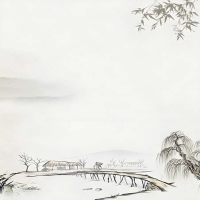海星诗句,自古以来便是文人墨客笔下灵感的源泉。海洋的浩瀚与神秘,赋予了诗人们无尽的遐想与创作激情。从唐代李白的“海客谈瀛洲,烟涛微茫信难求”到宋代苏轼的“海上生明月,天涯共此时”,海星意象常与广阔、自由、深邃的情感相联,成为诗词中不可或缺的元素。这些诗句不仅描绘了海洋的壮丽景色,更融入了诗人对人生、自然和宇宙的深刻思考。
在中国古典诗词中,海星常被用作象征,代表远方的梦想、未知的以及内心的宁静。杜甫在《登高》中写道:“无边落木萧萧下,不尽长江滚滚来。”虽未直接提及海星,但通过江河的意象,间接呼应了海洋的永恒流动,引发读者对生命轮回的感悟。海星诗句的魅力在于其 ability to evoke a sense of wonder and contemplation, bridging the gap between the tangible world and the abstract realms of human emotion.

Moreover, the incorporation of sea stars in poetry often reflects the cultural and philosophical underpinnings of different eras. In the Tang Dynasty, poets like Li Bai embraced a romanticized view of the sea, using it as a metaphor for personal freedom and escapism. His famous line, "欲穷千里目,更上一层楼," though not explicitly about sea stars, inspires a similar upward gaze towards the vastness of the ocean and the stars above. This connection highlights how海星诗句transcend mere description, becoming vessels for deeper meanings about human aspiration and the infinite.

In modern times, the appeal of海星诗句has not waned. Contemporary poets continue to draw inspiration from the sea, weaving its imagery into works that address themes of environmental conservation, globalization, and inner peace. For instance, the imagery of a sea star clinging to a rock amidst turbulent waves can symbolize resilience and hope in the face of adversity. This enduring relevance demonstrates how海星诗句remain a powerful tool for artistic expression, capable of adapting to new contexts while preserving their timeless beauty.
The process of creating海星诗句often involves a delicate balance between observation and imagination. Poets might start by contemplating the physical characteristics of sea stars—their radial symmetry, vibrant colors, and slow movement—and then extrapolate these into metaphors for harmony, diversity, and patience. This artistic transformation allows readers to see the ordinary in an extraordinary light, fostering a deeper appreciation for nature's wonders.
Furthermore,海星诗句frequently appear in educational contexts, serving as entry points for students to explore classical Chinese literature. By analyzing these verses, learners can gain insights into historical perspectives on nature and humanity, enhancing their cultural literacy. The rhythmic and melodic qualities of such poetry also make it accessible and engaging, encouraging a lifelong love for the arts.
In conclusion,海星诗句represent a rich tapestry of linguistic and emotional depth, connecting readers across generations through shared experiences of awe and reflection. Whether in ancient scrolls or modern anthologies, these verses continue to inspire, reminding us of the ocean's eternal dance with the stars above and the poetry within us all.



 相关阅读
相关阅读












